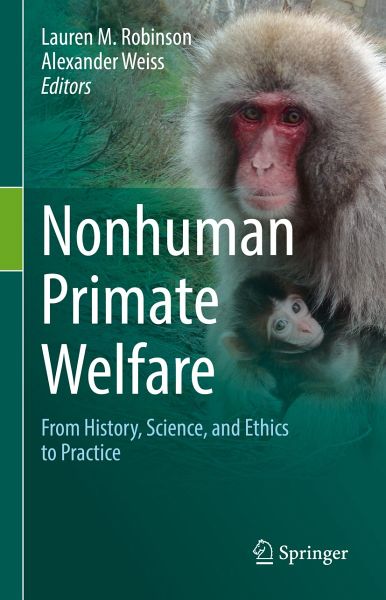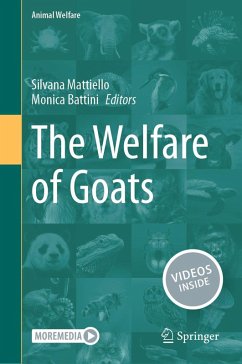
Nonhuman Primate Welfare (eBook, PDF)
From History, Science, and Ethics to Practice
Redaktion: Robinson, Lauren M.; Weiss, Alexander
Versandkostenfrei!
Sofort per Download lieferbar
136,95 €
inkl. MwSt.
Weitere Ausgaben:

PAYBACK Punkte
68 °P sammeln!
This volume reviews the broad topic of welfare in nonhuman primates under human care. Chapters detail the history of primates in captivity, ethical and legal issues surrounding the use of nonhuman primates as entertainment or in research, the different approaches that welfare are measured, and how housing, enrichment, and other conditions can foster or degrade welfare. Since humans began keeping nonhuman primates we have made vast strides in understanding their cognitive abilities, strong social bonds, vibrant personalities, and their capacity for joy and suffering. With an increasing number o...
This volume reviews the broad topic of welfare in nonhuman primates under human care. Chapters detail the history of primates in captivity, ethical and legal issues surrounding the use of nonhuman primates as entertainment or in research, the different approaches that welfare are measured, and how housing, enrichment, and other conditions can foster or degrade welfare.
Since humans began keeping nonhuman primates we have made vast strides in understanding their cognitive abilities, strong social bonds, vibrant personalities, and their capacity for joy and suffering. With an increasing number of countries banning the use of great apes in biomedical research, the welfare of primates in zoos and research facilities has gained increasing attention.
This interdisciplinary work features contributors from many of the fields involved and those on both sides of the issue, thus providing an exhaustive overview of primate welfare.Readers from animal welfare science, primatology, animal testing, veterinary medicine, conservation to ethics and legislation will find this an important account.
Dieser Download kann aus rechtlichen Gründen nur mit Rechnungsadresse in A, B, BG, CY, CZ, D, DK, EW, E, FIN, F, GR, HR, H, IRL, I, LT, L, LR, M, NL, PL, P, R, S, SLO, SK ausgeliefert werden.












